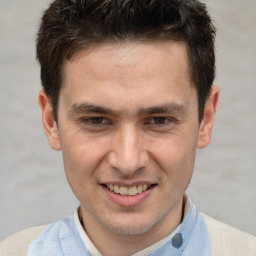This sample will let you know about:
- Discuss selected characteristics of living cells.
- Explain the importance of interphase.
AC 11.1: Discuss selected characteristics of living cells.
Answer: Living cells is defined as the basic or fundamental unit of life with organised and complex structures which enable them for performing the specific functions. They also have capability to passing on the genetic materials to their offspring. Living cells have several characteristics involving the capability to reproduce, grow, respond towards stimuli and accept to their surroundings and environment, and also carry out the metabolic procedures. The living being contain the genetic material such as the DNA or RNA which is utilised to regulate these processes. The living cells have various key characteristics which distinguish them from the non-living matter. Cell maintain the homeostasis by regulating the internal conditions, such as; the pH value and temperature, for making sure the optimal function. They use energy via the Example of assignment metabolic procedures, as photosynthesis or the cellular respiration, for sustaining the life. In addition, cells respond for their environment, adjusting their functions for the external stimuli as chemicals or lights. One of the most critical characteristics of the cells is their ability to development and growth, allowing to the formation of organs, tissue or the entire organism (Fullick, & Bircher, 2015). Cells can also adapt and evolve over period by the genetic mutation, which contribute for the diversity of life on globe.
AC 11.2: Compare and contrast prokaryotic and eukaryotic cells and the impact viruses have on them.
Answer: The prokaryotic and the eukaryotic cells are 2 different types of cells with notable differences in organisation and structure. The prokaryotic cells, found in archaea and bacteria. In contrast the eukaryotic cells, found in the animals, fungi and plants. The prokaryotic cells or bacterial cells are very smaller and simpler than the eukaryotic living cells. Such as; the prokaryotic cells lack a nucleus and the other membrane bound organelles also not found within the cells of prokaryotic organism. Whereas, on the other hand, the eukaryotic cells, have nucleus and the other organelles. Both prokaryotic and Eukaryotic cells can be infected by Viruses, and causes viral illnesses. The viruses are the entities which impact both the eukaryotic and the prokaryotic cells, but the impact may differ. As the viruses are the obligate parasite which need a host cell for replicating. In the prokaryotes, the viruses or the bacteriophages inject their genetic material into the cell of bacteria, and hijacking its machinery to Assignment Help replicate and frequently causing the cell lysis. They infect eukaryotic and prokaryotic cells by injecting their genetic materials (which is RNA) into the host cell and utilising the cellular machinery of host by for reproducing. In the eukaryotic cells, the virus may enter through various way and replicate using the host cell resources. Some virus can integrate their genetic material as RNA into the genome of host cell as HIV, while the other one causes cell lysis like Influenza (Toole, & Toole, 2015). The viral infections within the eukaryotes can result in the wider range of illnesses, from the common cold to the more severe diseases as COVID-19.
AC 11.3: Discuss eukaryotic sub-cellular structure and organelles.
Answer: The eukaryotic cells contain various sub-cellular organelles and the structures which may include the mitochondria, the nucleus, the endoplasmic reticulum, peroxisomes, lysosomes and the Golgi apparatus. Each of these sub cellular structures and organelles has their own specific function within the living cell. The eukaryotic cells are characterised through their complicated sub cellular structure, involving the different membrane bound organelles which perform the specific functions some of the key organelles and their specific roles are;
Nucleus: this the control centre of the cell, controlling the DNA and accountable to regulating the gene expression and directing activities.
Mitochondria: known as the powerhouses of the cell. Cellular respiration occurs, generating the ATP from oxygen and glucose.
Endoplasmic reticulum (ER): it is a network of membrane which involved in the process of protein synthesis (rough Endoplasmic reticulum) and the lipid metabolism (smooth ER).
Golgi Apparatus: this apparatus processes, packages, and modifies the protein and the lipids to transport within or outside from the cells.
Lysosomes: it contains the Lysosomes to digest the cellular waste and the foreign particles or materials, maintains health of cells.
Vacuoles: this is found within the plant cells and assist to store water, waste products and nutrients, maintain pressure and torque in the plant cells.
Chloroplasts: this is the site of photosynthesis, converting the sunlight, water and CO2 into the oxygen and glucose.
Peroxisomes: it assist to breakdown the fatty acids and also detoxify the harmful substances.
Cytoskeleton: it composed of the microtubules, intermediate filaments, and microfilament, offering the structural assistance and supporting the cell movement (Boyle, 2015).
All these organelles work together to make sure the the survival, function and growth of the cells and reflecting the versatility and complexity of the eukaryotic cells.
AC 21.1: Explain the role of the cell membrane in regulating how nutrients are gained and waste products lost.
Answer: The cell membrane of the living beings regulates the movements of waste material and the nutritive substances in and outside of the living cells. Since, the cell membrane of the living being is selectively permeable. Therefore, its allows only some of the certain materials to pass through. Here's how it carry off this:
Selective permeability: The cell membrane is made of of the lipid bilayer and embedded with the proteins. The lipids form a hydrophobic centre that limits the passage of the polar molecules as water while allowing the non polar molecule like carbon dioxide and oxygens to diffuse freely.
Transport proteins: the integral membrane proteins which facilitates the transportation of the specific nutrients for the cell through different mechanisms like active transport, passive transport and facilitated diffusion and the bulk transport.
Receptor proteins:the receptor proteins on the surface of the cell bind with specific molecules as the hormones and the signalling molecule, allowing the cell for responding to the external cues and also regulate nutrient uptake accordingly.
Exocytosis and endocytosis: the waste products are expelled from the cell through the exocytosis, where the vesicles containing the waste fuse with the membrane of cell. Conversely, the endocytosis allows the cell to engulf large particles, like cellular debris and nutrients, within the vesicles.
AC 21.2: Explain how animal cells use nutrients to provide the energy for growth, movement, and cell division.
Answer: the animal cells utilise the nutrients to offer the energy or potential to get growth and development, movement and also for the cellular division. All this procedures are done by the processes such as; the kerbs cycle, glycolysis phenomena and the procedures of Oxidative phosphorylation, that convert the nutrients into the Adenosine triphosphate or ATP, which is also known as the energy currency of cells. The animal cells uses nutrients, primarily the glucose and oxygen, to produce the energy via a process which is known as the cellular respiration. This kind of energy production is crucial to different cellular functions, involving growth, cell division and movement (Boyle, Indge, & Senior, 2008).
Growth: Nutrients are metabolised in the mitochondria of the cell throughout the cellular respiration. The glucose is broken down and the energy stored in the chemical bond of glucose is converted into the ATP. ATP serves as the fuels various biochemical reaction required to the cell growth. The energy is utilised for the synthesize new cellular elements as lipids, nucleic acids, proteins, and lipids enabling the cell division and growth.
Movement: the animal cells utilise the ATP for powering the molecular motors as Kinesin and myosin, that are involved in the Science Research Topics muscle contractions, allowing the animals to move and also it facilitates the organelles movements, vesicles and other cellular components within the cells.
Cell division: throughout the cell division, the energy is needed to DNA replication, segregation of chromosomes and the formation of the new cellular membranes. The ATP offers the essential energy to these procedures, making sure the precise cell division and the generation of the daughter cell.
AC 21.3: Explain the synthesis of proteins.
Answer: The synthesis process of proteins involves the process of transcription, where the Deoxy ribonuclic acid (DNA) sequence of the gene is transcript or copied into the messenger RNA (mRNA) and the translation process, in which the mRNA sequence is utilised for assembling the amino acids into the protein molecules. Protein synthesis is the fundamental cellular process which involves the generation of the proteins from the genetic information stored within the DNA. This kind of intricate procedures occurs in 2 main stages such as transcription and the translation. The transcription process takes place within the cell nucleus. In nucleus, the DNA double helix unwinds an by the help of enzyme RNA polymerase the DNA template strands can be read and synthesizes the complementary strand of m RNA. The RNA polymerase enzyme adds the complementary RNA nucleotides (A, U, G and C) which is based on the template of DNA. The newly formed m RNA molecule carries the genetic code from the DNA to ribosome in the cytoplasm. In the translation process in cytoplasm at the ribosome messenger molecules read and transfer RNA molecules bring the specific amino acids for the ribosome based on the codons on the messenger RNA. The ribosome adjoining these amino acids together in correct sequence, and forming the polypeptide chain. As the ribosome molecule moves along the mRNA, the chain grows till the stop codon is not reached and signalling the end of the protein synthesis.
AC 31.1: Explain the generation of specialised tissues from embryonic stem cells.
Answer: The embryonic stem cells have ability to differentiate into any kind of living cells in the living body, which lead to generate the specialized tissues and organs. This kind of process is regulated through the different signals within the environment of living cells. The generation of the specialized tissues from the embryonic stem cells involves a process known as the cell differentiation and the development. It works through the following manner;
ESCS (Embryonic stem cells): in initial, during the early embryonic development, the pluripotent embryonic stem cells are present. These cells have capability to develop the into any kind of cells in the body (Toole, & Toole, 1999).
Cell differentiation: the ESCs undergo a series of the tightly regulated genetic & the epigenetic modifications which gradually limit their ability. Particular genes are turned off of on, directing the cells for following the specific developmental pathways. This procedures is affected by the chemical signals from the nearby cells and the micro environment.
Tissue formation: the differentiated cells further organise and mature themselves into the functional tissues with the particular functions and structure. It involves cell to cell interaction, the tissue specific genes expression , and the establishment of the tissue architecture.
Maturation: the differentiated cells further organise and mature themselves into the functional tissues with the specific structure and functions. It involves cell to cell interactions, the establishments of tissue architecture and the tissue specific gene expression.
AC 31.2: Explain the importance of interphase.
Answer: the interphase is the stage or phase of the cellular cycle where the living cell grows and make the duplicates of its DNA in the preparation for the division of cells. Interphase is important as it makes sure that each of the daughter cell of parent cell will have a complete set of the genetic materials (DNA). The interphase is significant phase in the cell cycle as it represent the period betwixt the cell divisions (meiosis and mitosis) this plays several crucial roles in the life cycle of the cell.
The DNA replication: throughout the interphase stage, the cell undergoes to the DNA replication process and making sure that each of the chromosome is duplicated. This step is necessary to maintain the correct chromosome number within the daughter cells throughout the process of cell division.
Cell growth: the interphase allows the cell to grow or develop in the size by making the proteins molecule, lipid as well as various kind of organelles, preparing to the upcoming division.
Metabolic activity: several metabolic procedures occur via the interphase, involving the synthesis of the RNA molecule, protein and the various other essential molecules to the normal cellular function.
Checkpoint assessment: the cell check to the DNA injuries or damages and makes sure that the condition are too favourable to the cell division throughout the interphase. If vital mistakes or errors or the damages are found then the cell cycle can be paused or stop or halted for preventing the formation of the abnormal daughter cells.
AC 31.3: Discuss factors that initiate cell division.
Answer: The process of cell division is started or initiated through different elements or factors which include the growth signals, damage of DNA and the completion of the process of DNA replication. The cell division is a basic process in the biology, is started and regulated through the different elements and making sure precise control and timing.
Cell size: cell have the critical size threshold, and when they develop or grow beyond this limit or point, it triggers the cell division, this makes sure the daughter cells are not very small for functioning potentially.
Cell signalling: the external signals from the neighbouring cells or the external environments can state the cell division. This knid of signals frequently involve the developmental or growth factors and the hormones which bind for receptors on the surface of the cells, activating the intercellular pathways which promote the cell division.
The genetic signals: the internal cell genetic machinery play a significant role. The regulatory proteins as the cyclins and cyclin dependent kinase or CDKs are accountable to the coordinating the cell cycle progression as well as initiating the cell division process.
DNA damage: in the multicellular organism, the cell division is tightly controlled throughout the development to make sure the formation of the specific organs and tissue. These elements collectively govern when and how the cells divide and mainlining the balance betwixt the growth process, repair and the controlled reproduction.
AC 31.4: Explain how the same genetic information is received by each daughter cell.
Answer: Throughout the cellular division, the DNA is replicated & then divided equally betwixt the 2 different daughter cells. It makes sure that each of the daughter cells attains the similar genetic information. The proper transmission of the genetic information Geology Topics toe each daughter cell throughout the cell division is necessary to maintain the genetic stability and the traits continuity. This procedures primarily occurs throughout the mitosis, that makes sure that each of the daughter cells attains an identical set of the genetic material.
DNA replication: prior to the cell division, the cell organelles undergoes for the DNA replication throughout the interphase. The DNA unwinds their double helix, and each of the strands serves like a template to the synthesis of the complementary strand, this results in two similar DNA molecules, each of them contain one old and the one new synthesize strand.
Chromosome structure : the DNA molecules condense and wrap around the proteins known as histone to form the chromosomes . Each of the chromosome consists of the two sister chromatids, that are held together at the centromere. The two sister chromatids are genetically similar as they generate from the DNA replication (CGP, 2015).
Mitotic division: throughout mitosis, the sister chromatids are separated and distributed for each daughter cell. This makes sure that each cell attains an similar set of chromosomes, containing the similar genetic information as the parent cell.
AC 31.5: Compare and contrast cancer cells with normal cells.
Answer: the cancerous cells are differ from the normal cells by several ways. Such as; they divide or differentiate uncontrollably, programmed cell death (evade apoptosis), and can invade the tissue which is different from cancerous cell as well. On the other hand the normal cells, have the controlled division and they can undergo for apoptosis when essential.
Differences
Growth control: normal cells strictly regulate their development and growth and division by cell cycle checkpoints, however, cancer cell frequently lose this control, directing for uncontrollable proliferation.
Apoptosis: the normal cells have the capability to undergo programmed cell death in response to DNA injury or damage or when they become older. Cancer cell frequently evade apoptosis, allowing them to persist and accumulate
Contact inhibition: the normal cells stop dividing when they come into the contact with the neighbouring cells, maintaining the tissue structure and the cancer cells usually ignore this inhibition, directing to the production of tumours.
SimilaritiesGenetic material: Both cancer and normal cell contain the DNA molecule as the genetic material which is encoding information to the cellular functions.
Metabolism: Both kind of cells requires energy and nutrients for functioning and surviving , using same metabolic processes.
Plasma membrane: both normal and cancer cell have a plasma membrane which separate the internal and external environment.
REFERENCES
Books and Journals:
Fullick, A. & Bircher, P. (2015), A level Biology for OCR, Oxford University Press
Toole, G. & Toole, S. (2015), AQA Biology A2 Biology, Oxford Publishers
Boyle, M. (2015), Student Support Materials - Control in Cells and Organisms, Collins Educational
Boyle, M., Indge, B. & Senior, K. (2008), Human Biology, Collins Educational
Toole, G. & Toole, S. (1999), Understanding Biology for Advanced Level, Stanley Thornes Ltd.
CGP, (2015) Head Start to A-level Biology, CGP Ltd.
This is a simple text to bridge the gap between GCSE and A-level biology.
ONLINE LINKS:












